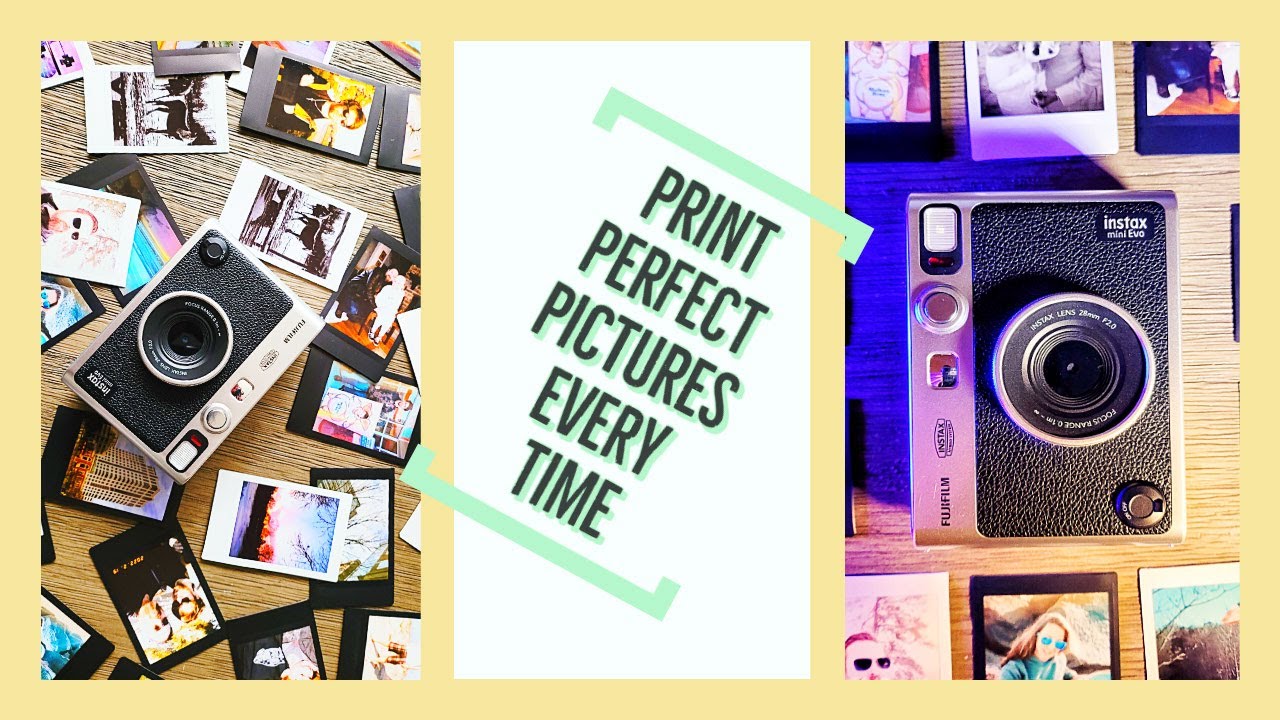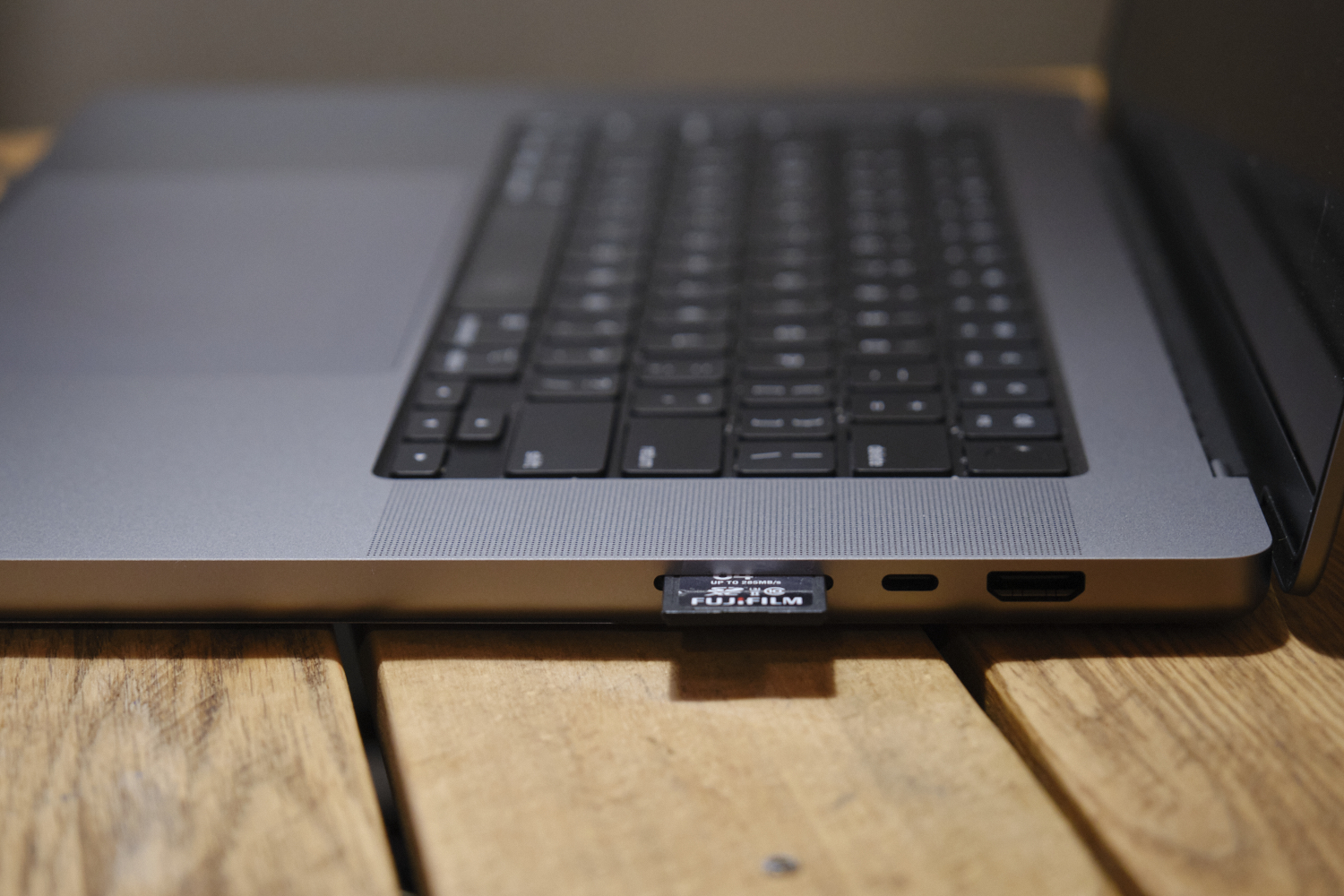Importing images from your Fujifilm Instax to your MacBook can seem like a daunting task, especially if you're not particularly tech-savvy. However, the process is quite manageable once you have the right tools and software at your disposal. Whether it's for preserving memories or editing those instant snaps, transferring your pictures can be a breeze. In this guide, we'll walk you through everything you need to get those Polaroid-like images onto your laptop. So, grab your Fujifilm Instax camera, and let's dive in!
Required Tools and Software

Before you start importing your photos, it's essential to gather the right tools and software. Here’s what you’ll need:
- Fujifilm Instax Camera: Make sure your camera is handy and has the images you want to import.
- USB Cable or SD Card: Depending on your camera model, you may need a USB cable to connect directly to your MacBook or an SD card to transfer images manually.
- MacBook: A laptop with macOS installed and adequate storage space for your images.
- Image Capture Software: This comes pre-installed on all MacBooks. It’s a simple tool that allows you to import images from connected devices.
- Photo Editing Software (Optional): If you want to edit your images after importing, having software like Adobe Photoshop or Lightroom can enhance your photography experience.
To give you a clearer picture, here’s a quick table summarizing the required tools:
| Tool | Description |
|---|---|
| Fujifilm Instax Camera | Your device for capturing instant images. |
| USB Cable / SD Card | For connecting the camera to the MacBook or transferring images manually. |
| MacBook | The laptop you will be importing images to. |
| Image Capture Software | Used for importing images directly from your camera. |
| Photo Editing Software | Optional tools for enhancing your images post-import. |
Having these tools ready will streamline the import process and make it a lot more enjoyable!
Also Read This: How to Remove Letters from Adobe Stock Library
Connecting Your Fujifilm Instax to MacBook

Connecting your Fujifilm Instax to your MacBook is a straightforward process that you can accomplish in just a few simple steps. First, you’ll want to gather all necessary equipment. Make sure you have:
- Your Fujifilm Instax camera (with the film removed)
- A USB cable compatible with your camera
- Your MacBook
Before starting the connection process, double-check that your camera is charged or has fresh batteries. This will help prevent any hiccups during your image import. Now, follow these easy steps:
- Locate the USB port on your Fujifilm Instax camera. It's usually found on the side.
- Plug one end of the USB cable into the camera and the other end into a USB port on your MacBook.
- Turn on your camera. Your MacBook should automatically recognize it as an external device.
If you don’t see any prompts or notifications on your MacBook, don’t fret! Sometimes, you might need to navigate to “Finder” or “System Preferences” to confirm that your camera is connected. With everything connected properly, you’ll be ready to import images in no time. Keep your camera powered on during this whole process to ensure a smooth connection!
Also Read This: How Much YouTube Pays for a 1-Hour Video Revenue Insights
Importing Images Using Image Capture
Now that your Fujifilm Instax is connected to your MacBook, let’s dive into how to import those cherished images using the Image Capture application. This is where the fun begins!
Image Capture is a standard app on macOS that simplifies the process of importing photos from external devices. Here’s how to use it:
- Open the Image Capture app. You can find it by searching for "Image Capture" in Spotlight (the magnifying glass icon at the top right of your screen).
- Your connected Fujifilm Instax should appear in the left sidebar under “Devices.” Click on it.
- At this point, you’ll see all the images available for import in the main window. You can choose to import all images or select the ones you want by clicking on them.
Once you've selected your images, you’ll notice options at the bottom of the window:
- Import All: This option instantly imports all your selected images to your MacBook.
- Import: Use this if you only want specific images from your camera.
After you click your desired option, choose the destination folder where you want the images saved. You can create a new folder if you like or pick an existing one. Once you hit “Import,” your images will start transferring. Just sit back and enjoy the process as your memories get digitally saved! And just like that, you’ve imported your treasured photos like a pro.
Also Read This: Strategies to Boost Views on Rumble and Enhance Engagement
Using Third-Party Applications for Import
If you're looking for a more flexible way to import images from your Fujifilm Instax camera to your MacBook, you might consider using third-party applications. These can offer unique features and functionalities that Apple’s native software doesn’t provide. Here are some popular options:
- Adobe Photoshop Lightroom: This is a powerful photo management and editing tool. It not only facilitates easy imports but also organizes your photos efficiently. The import process is user-friendly, allowing you to select which images to bring over from your Instax.
- Image Capture: Although it is a built-in app on macOS, it functions similarly to third-party applications. You can utilize it to manage your image imports effectively and customize settings, like file formats and resize options.
- PhotoSync: This app supports wireless transfer too. If you have your Instax connected to a mobile device, you can transfer the photos to your MacBook over WiFi. This app is particularly useful for bulk imports.
To use these applications, generally, you’ll need to connect your camera or memory card to your MacBook. Once connected, simply open the application and look for an import feature. Follow the on-screen prompts, and you’ll have your photos in no time! Remember, while these applications can enhance your workflow, be sure to familiarize yourself with their specific functionalities for the best results.
Also Read This: Can I Modify Images From Storyblocks for Personal and Commercial Use
Tips for Managing Imported Images
Once you’ve successfully imported images from your Fujifilm Instax to your MacBook, the next step is to manage them effectively. Keeping your digital library organized can save you time and make locating specific photos easier down the road. Here are some handy tips:
- Create Folders: Make folders categorized by event, date, or even photo type. This will make it easier to find what you’re looking for when you need it.
- Rename Files: Instead of keeping random file numbers, consider renaming your photos with a descriptive title. This can include the event name and date, helping you quickly identify them later.
- Use Tags: If your photo management application supports tagging, add relevant keywords to your images. This allows for quick searches and sorting.
- Backup Your Images: Ensure your photos are stored on multiple devices. Consider using cloud services like Google Drive or Dropbox to back up your images in case anything happens to your MacBook.
- Regularly Clean Up: Go through your image folders periodically to remove duplicates or images that no longer hold value for you.
Organizing your images might seem like a chore, but taking a little time to get everything in order will definitely be worth it in the long run. Plus, you’ll always know where to find your treasured memories!
Also Read This: Adding YouTube Music to InShot Video Editor
Troubleshooting Common Issues
Importing images from your Fujifilm Instax to your MacBook should be a seamless experience. However, just like any tech-related task, you might run into a hiccup or two. Here are some common issues and their solutions:
- Not Recognizing the Camera: Sometimes, your MacBook might not recognize your Fujifilm Instax. Ensure that the camera is powered on and connected properly via USB. Restart your MacBook and try reconnecting.
- Software Compatibility: Make sure that your operating system is up-to-date. Older versions of macOS may have compatibility issues with newer devices. Check Apple’s website for the latest updates.
- Missing Import Option: If the option to import images isn’t showing up, ensure you have the right app open. For Fujifilm cameras, apps like Image Capture or Photos should be your go-to. If in doubt, restart the application.
- Corrupted Images: If the images appear distorted or corrupted, they might not have transferred correctly. Try importing again, and if possible, check if images can be viewed directly from the camera.
- Storage Space Issues: If your MacBook is low on storage, the import may fail. Check your disk space by going to Apple Menu > About This Mac > Storage. Clear up unnecessary files if needed.
If you've tried all of these steps and are still having trouble, don’t hesitate to check the Fujifilm support page or reach out to their customer service for assistance.
Conclusion
Importing images from your Fujifilm Instax to your MacBook doesn’t have to be a daunting process. By following the steps outlined above, you can easily enjoy capturing and sharing your memorable moments without much hassle. Remember, technology can occasionally throw curveballs at you, but with a little patience and the right troubleshooting steps, you can often find a solution.
To recap, here’s a brief overview:
| Step | Details |
|---|---|
| Prepare Your Device | Ensure your Instax camera is charged and ready to connect to your MacBook. |
| Connect via USB | Use the appropriate cable to connect the camera and your system. |
| Import Images | Open an import application like Photos or Image Capture on your MacBook to start transferring your pictures. |
| Troubleshoot | If issues arise, follow the troubleshooting tips provided to resolve them. |
With all equipped knowledge, you can dive into your Fujifilm Instax experience, capturing breathtaking photos to cherish for years to come. Happy snapping!
 admin
admin








